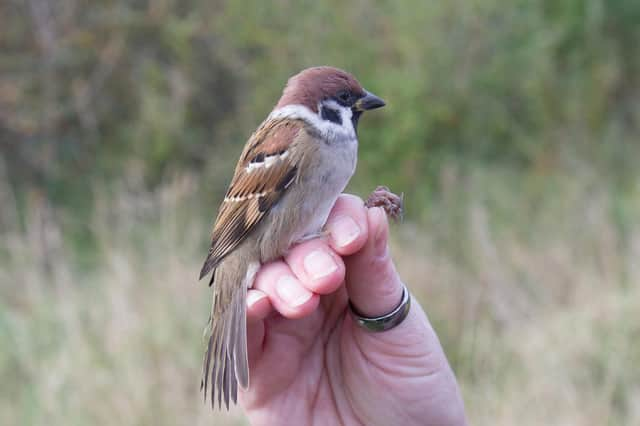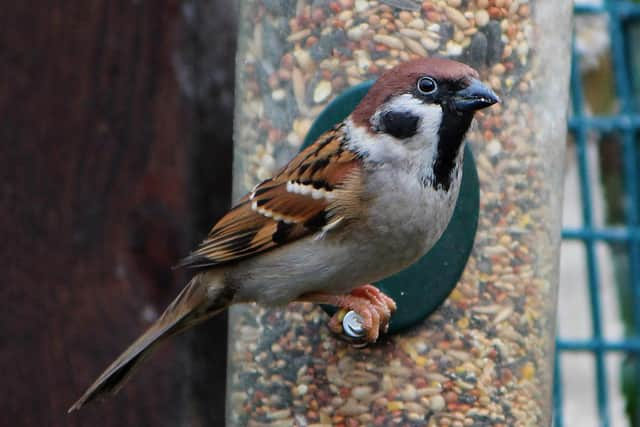NATURE NOTES: Spuggies - they are not all the same


Last week I spent a morning at our tiny village nature reserve preparing homes for some very important residents - tree sparrows.
Tree sparrows are a different species to the house sparrow that are (or were) common in urban areas. Unlike house sparrows, where the grey-capped male birds look quite different to the females, you can’t separate the sexes in tree sparrows, they both look the same. Tree sparrows have a rich, chocolate brown cap, a small black bib and a black ‘beauty spot’ on their cheeks.
Advertisement
Hide AdAdvertisement
Hide AdIn the UK, tree sparrows suffered a cataclysmic decline of over 90 per cent between 1970 and 2006. This decline was attributed to changing farming practices, especially a move away from mixed farming and more winter-sown cereals which meant a loss of over-wintered stubbles. Friends of mine in southern England are still very jealous that we regularly see tree sparrows up here, but it’s only quite recently that they've made a bit of a comeback.


As the name suggests, tree sparrows nest in holes in trees but they will also use holes in buildings and rock crevices. Their diet is mostly seed-based, but for the first couple of weeks of life, young tree sparrows need a good supply of insects. A study at Rutland Water showed that aquatic insects were particularly favoured and birds that nested further away from water didn’t do so well.
Like a lot of our farmland birds, a supply of seed from over-wintered stubbles is really important. Recently, farmers have been encouraged to leave unharvested cereal margins around the edges of fields, these margins appear to be very good for tree sparrows and birds like reed buntings, yellowhammers and chaffinches.
Back to our village nature reserve which consists of a pond and some trees that are starting to reach maturity. It is surrounded on two sides by houses. A few years ago we were catching birds there in winter as part of the UK ringing scheme and we were catching a few tree sparrows. We had experience of them taking readily to nest-boxes, so that spring we put up 12 suitable nest-boxes in the hope that they might breed. Unlike territorial birds like blue tits, tree sparrows are colonial meaning that you can put several boxes up in a small area, even a few on one tree.
Advertisement
Hide AdAdvertisement
Hide AdThat summer ten of the 12 boxes were occupied. The following winter we put up another 12 boxes and that summer 20 of the 24 boxes were used. We now have nearly 40 boxes out for them.
The boxes need to have a hole of at least 28mm and be about 20cm deep because tree sparrows like to fill their box to capacity with nesting material - they use what they can find locally, chicken feathers are common as is horse hair and a lot of grass. Tree sparrows can raise three (rarely four) broods of chicks in a single breeding season.
The nature reserve seems to satisfy their needs. The boxes mimic the holes in trees that they like, a ready-supply of food comes from the bird feeders in the surrounding houses and the pond supplies insects for the critical chick-rearing period.
So my job last week was to check the boxes were still on the trees - winter storms meant a few casualties and to clear out the previous years nesting material. It won’t be long now before the sparrows are starting to fill them up again.
If you have tree sparrows coming to your garden, put up a few nest-boxes if you can, they might just hang around and breed.
By Iain Robson